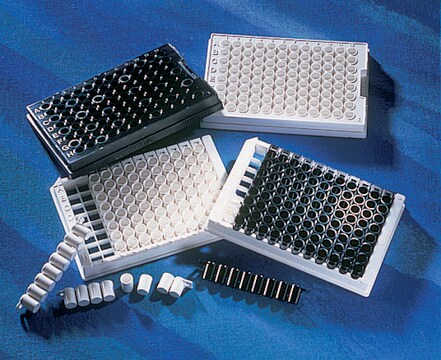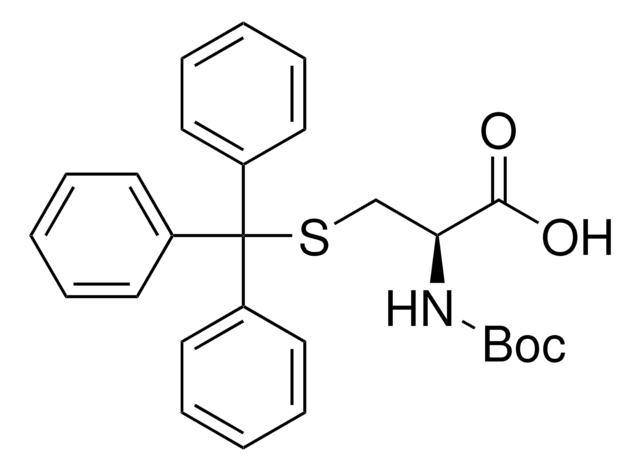P0194
Protein Kinase Cζ isozyme human
≥75% (SDS-PAGE), recombinant, expressed in baculovirus infected insect cells, buffered aqueous solution
Synonyme(s) :
Ca2+-activated phospholipid-dependent serine-threonine kinase ζ isozyme human, PKCζ human
About This Item
Produits recommandés
Produit recombinant
expressed in baculovirus infected insect cells
Niveau de qualité
Essai
≥75% (SDS-PAGE)
Forme
buffered aqueous solution
enzyme activity
>800 units/mg protein
Poids mol.
76-80 kDa by SDS-PAGE
Numéro d'accès UniProt
Conditions d'expédition
dry ice
Température de stockage
−70°C
Informations sur le gène
human ... PRKCZ(5590)
Actions biochimiques/physiologiques
Phosphorylation appears to be an important mechanism of regulation of all PKCs. PKC plays a role in the regulation of cell transformation, growth, differentiation, ruffling, vesicle trafficking, apoptosis and gene expression.
Adéquation
Définition de l'unité
Forme physique
Code de la classe de stockage
10 - Combustible liquids
Classe de danger pour l'eau (WGK)
WGK 1
Point d'éclair (°F)
Not applicable
Point d'éclair (°C)
Not applicable
Équipement de protection individuelle
Eyeshields, Gloves, multi-purpose combination respirator cartridge (US)
Faites votre choix parmi les versions les plus récentes :
Déjà en possession de ce produit ?
Retrouvez la documentation relative aux produits que vous avez récemment achetés dans la Bibliothèque de documents.
Notre équipe de scientifiques dispose d'une expérience dans tous les secteurs de la recherche, notamment en sciences de la vie, science des matériaux, synthèse chimique, chromatographie, analyse et dans de nombreux autres domaines..
Contacter notre Service technique






